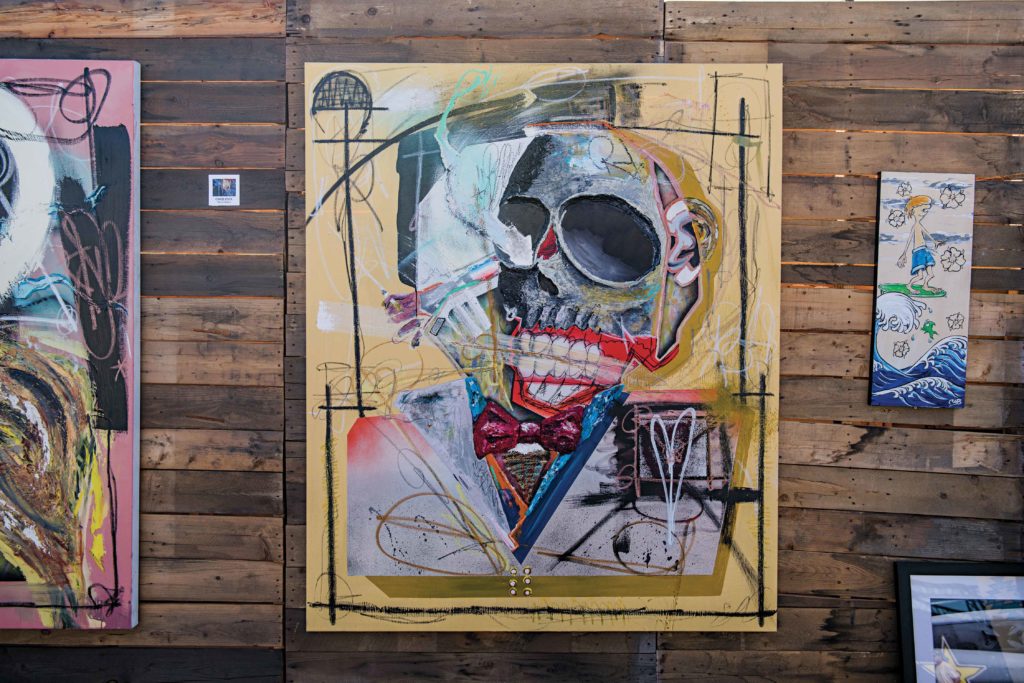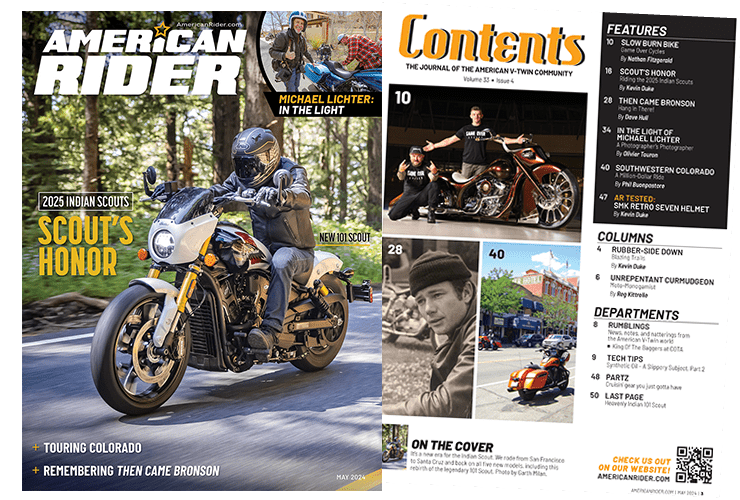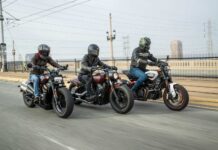
All about the Moto Beach Classic – and lots more – from RSD’s head honcho himself, Roland Sands
Words by Mitch Boehm
Photos courtesy of RSD
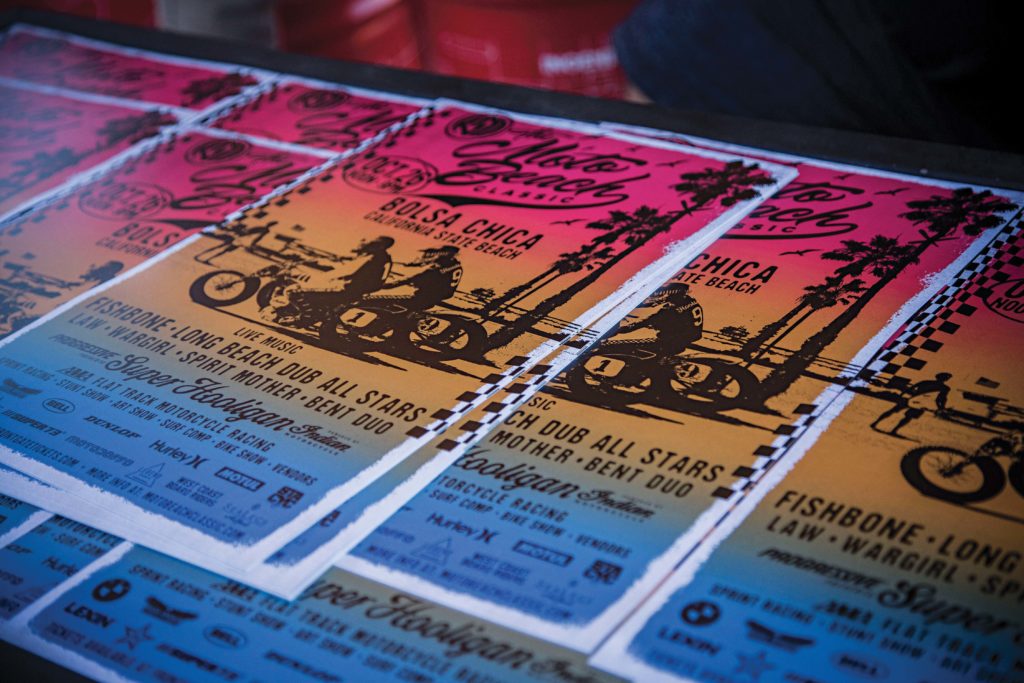
Roland Sands is nothing if not a busy guy. Aside from running a highly successful (and highly visible) parts and accessories company from his So-Cal headquarters in Los Alamitos, and building some of the wildest custom motorcycles on earth, the head man at Roland Sands Design is also an event promoter. His company’s Moto Classic Events brings together Super Hooligan streetbike flat track racing, sprint drag races, minibike racing, stunt shows, art, custom motorcycles, music, food, and of course a love of two wheels – and all of it at interesting and unique locales.
You’ve had the Moto Bay Classic in San Francisco, the Moto Street Classic from Tulsa, and the mothership – the So-Cal Moto Beach Classic from Bolsa Chica State Beach in Huntington Beach, California, which adds surfing and a saddlebag’s worth of LA/Orange County beach flavor to the mix. This year’s Moto Beach Classic, the third annual, took place in late October, and seemed to prove the old ‘third time’s a charm’ adage, with tons of people, lots of two-wheeled action, live music galore, and plenty to do and see.
We caught up with Sands in the days following Moto Beach III and asked him about the Classic, his motorcycling life, his company and the roots of the events he and his crew put on. Here’s how it went…

You’ve got quite a history in motorcycling, in racing and in business. Can you give us an overview of your experience? We’d guess a lot of folks don’t know you were AMA 250GP national roadracing champion back in 1998…
Wow, that’s more than 30 years of my life, and I’m 45 … I think. Maybe 44? I don’t even know! See? That’s how old I am! Let’s see… I first rode a motorcycle when I was four, and my first race was on a Kawasaki Jet Ski when I was about fifteen. It was at Marine Stadium, and there were jumps, tire jumps, and I remember getting run over by another dude and I thought I might drown. And my Jet Ski was all bashed up at the end of the race, and I thought, ‘I don’t know if this is for me’. [Laughs]
My first motorcycle race was when I was about 18, at Willow Springs on the big track. I took it serious from the moment I got on the track. It felt like something I wanted to master. I started racing a on 250 GP bike, in the novice class. My Dad knew I was into racing, and he knew I was a bit of a troublemaker at the time, and I think he was like, ‘I’m going to try to get this kid into something and see if he gets into it.’ And I immediately latched onto it. It was something I was willing to work hard at and do right. I won my first race, won my second race, won most of my novice races. And then it was time I moved up to whatever expert was at my local track … and I proceeded to crash quite a bit. Somehow, I ended up as a national champion.

Your family started Performance Machine. Did you work there?
Yeah, pretty much since I was a kid. Sweeping the floor, sort of learning all the facets of the business. I’ve assembled every product in the shop: master cylinders, brake calipers, foot controls, wheels… anything we were selling at the time. Then I got into designing and building bikes, and customizing stuff, and doing that type of thing.
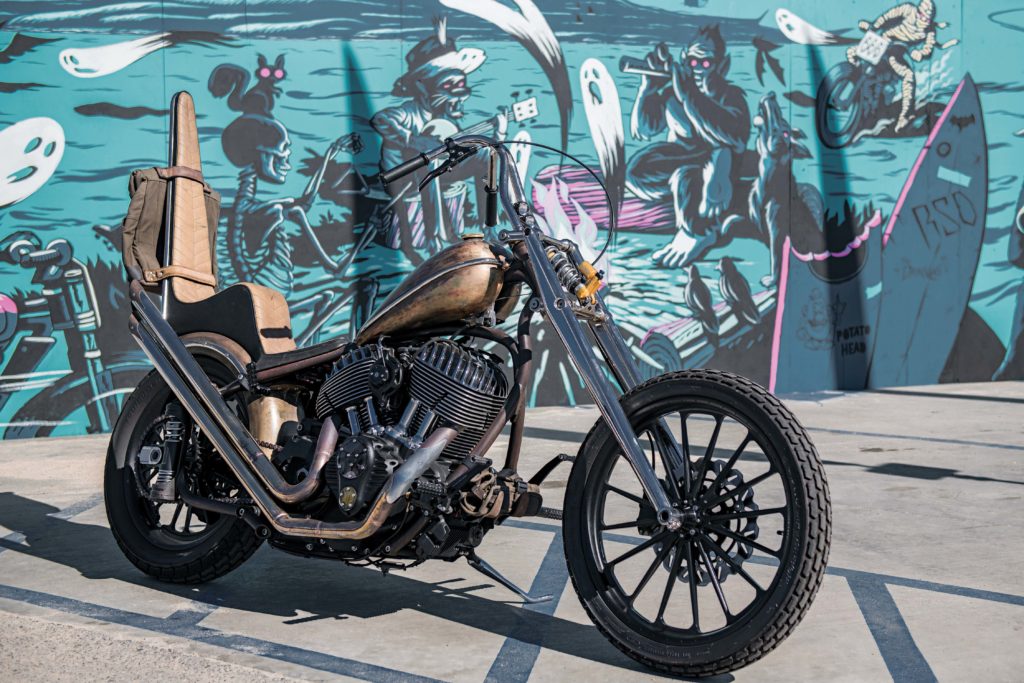
Did doing all that help your current business savvy?
I learned early on what a motorcycle was, what was correct and incorrect, what engineering was; hands-on engineering. I was putting things together and sometimes they wouldn’t go together right. So I was troubleshooting from the time I was 15, assembling products. I didn’t have a desk job or office job until I was 24 or 25… before I started designing on a computer or hand sketching. It was a process because I was racing at the time. And then I figured, ‘hey, why don’t we start working in 3D?’ This was in the mid ’90s. I brought the 3D design concept to the shop. At that time everyone was using CAD. To me, it was like, ‘there’s gotta be a better way to do this.’ So I figured out how we could bring in 3D design and that just changed the look of the whole product line.
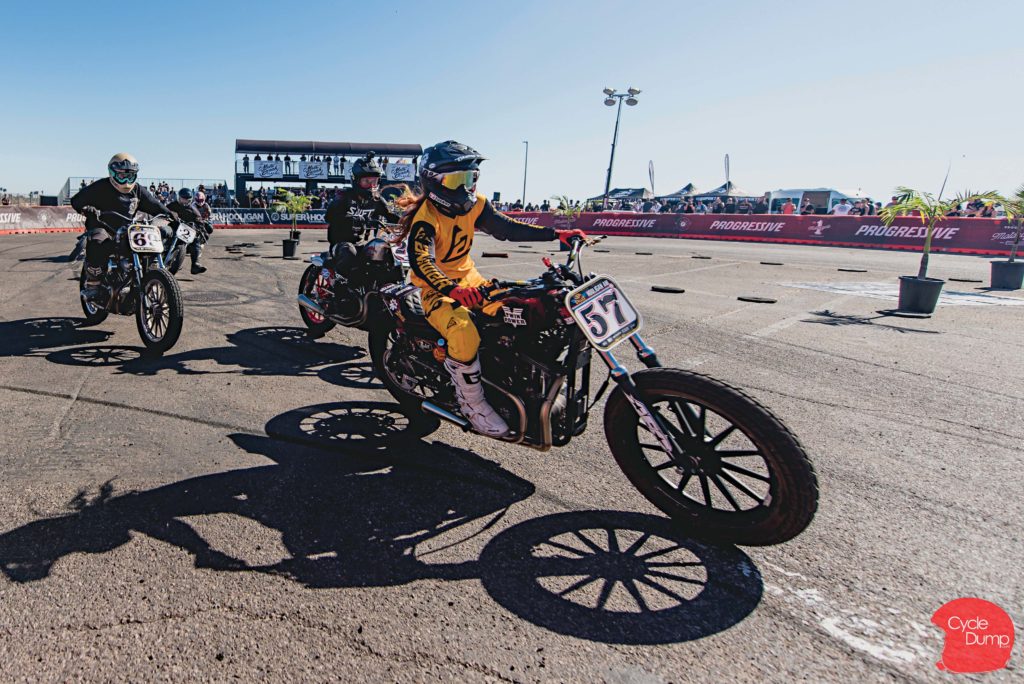
And then came Roland Sands Design. How did that happen?
I think it was because there was a group of products I wanted to make at the time that even my Dad was uncomfortable with. He was like, ‘why do you want to do that?’ But it just felt like the right thing to do. It was way different. So my Dad said I should put my own name on it, and I was like, ok, let’s do that. Because it was kinda like signature stuff – because I was designing all of it. I was designing the PM product and they’d say, ‘Hmmmm…we’re not sure that works for PM,’ and I’m like, ‘why don’t I put it out, then?’ It was cool because I got a head start on that idea and started getting some products out there.
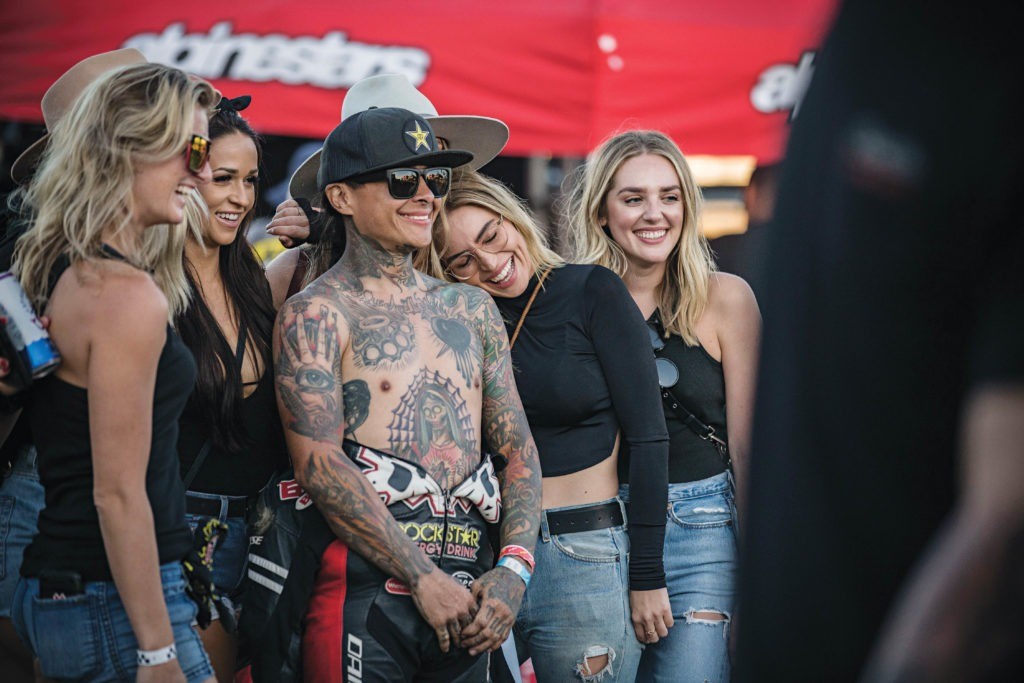
Let’s talk events. Your website says “what started out as a wild idea by the team at Roland Sands Design has developed into a series of Moto Classic Events.” Talk about that if you can.
I’ve always been super inspired by what the beach does naturally. It tends to bring cool humans from all walks of life together. I wanted to capture that and interject our passion for two wheels and racing into the mix. That evolved into wanting to add more elements. Like if you were a casual beachgoer and happened upon a motorcycle race that day, what other things could the event provide to spark and hold your interest? Certain things were no brainers, like surfing and food and drink, but the big one was adding the live music element. Everything rad has a soundtrack and the Moto Beach Classic was no different. I envisioned this collective of cool humans interacting. Surfers talking to motorcyclists, racers interacting with musicians, cool brands connecting with all of the above and hopefully all of it positively affecting and exposing would-be and could-be motorcyclists to a whole world and culture.
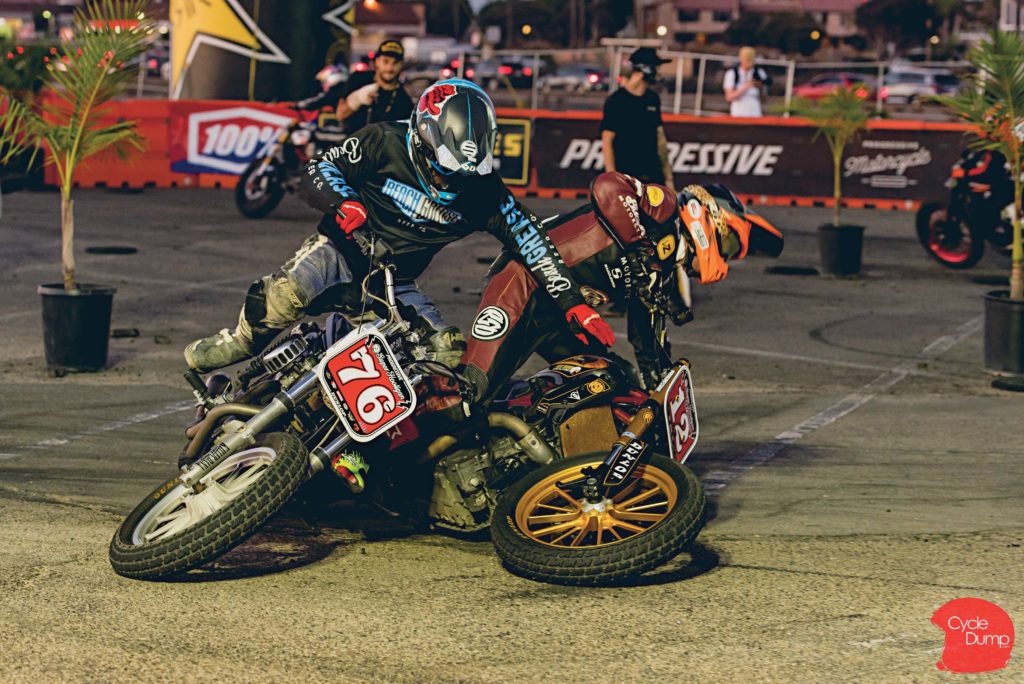
And the Hooligan thing?
Hooligan was like a natural progression, and started with me going out to Costa Mesa and riding Harleys. It was my way to get back into racing because I’d retired from it in 2002. I did some supermoto, but hurt my arm pretty bad. So I really didn’t race anything for a while. I had a 5-6-year hiatus where I didn’t race anything. And then I was like, ‘let’s go race Costa Mesa and go shred.’ There were a couple of real racers, but quite a few were just off the street. It was a blast and super fast, and it took us a long time to get the series started, from 2008-09 to starting a series in 2015 (I think)… yeah, end of 2015. A lot of it had to do with flat track racing coming back, and interest from the OEs, especially Indian. We were the right partner for them to make Indian authentic at the time in flat track. And this was before they had a race bike developed. But we went out and showed the world, hey, you can race these Scouts. They were not race bikes at all, but we turned them into race bikes. And Indian saw that there was an appetite for Indian to do a flat track project. And we were the kick-off for that idea.

Why Bolsa Chica State Beach and the Sea Legs live-music venue? What brought you there? Excellent surf, weather, all of the above?
All that, plus I had a relationship with the Sea Legs crew, so it was an open door. It was like, ‘hey, we can do this here.’ It was something we really wanted to make happen. It’s cool we were able to put that whole thing together.

The first one was a one-day event. Then last year was a two-day event. Then back to a one-day event this year. What do you think about two- versus one-day events?
The first one was a one-day event, and very successful. We had a lot of people out and we thought we’d like to do a two-day event. The next year we ended up partnering with Surf City Blitz, and that was a huge project. We had 40,000 people come out, 20,000 per day. Huge bands. Built a flat track on the beach. It was a radical activation, and a tremendous amount of work, but a good time, too. Something I enjoyed doing a lot. This year, Surf City Blitz didn’t end up happening. So, we took it back to a one-day at the original location. I would like to go back and do the Surf City Blitz again. It’s nice to see it big.

The other elements, surfing and art and culture… Does all that play well with the Hooligan racing?
I think with that event specifically. I think the secret there is that there are a lot of things going on. We’ve got art, music, a bike show, surfing, drag racing, flat track. This year we had a crazy BMX jump. We might have a roller derby someday! Throwing all this stuff together in one place … and then you’re also building this group of people who are from all different walks of life. I like to reach deep into the community and bring people out.
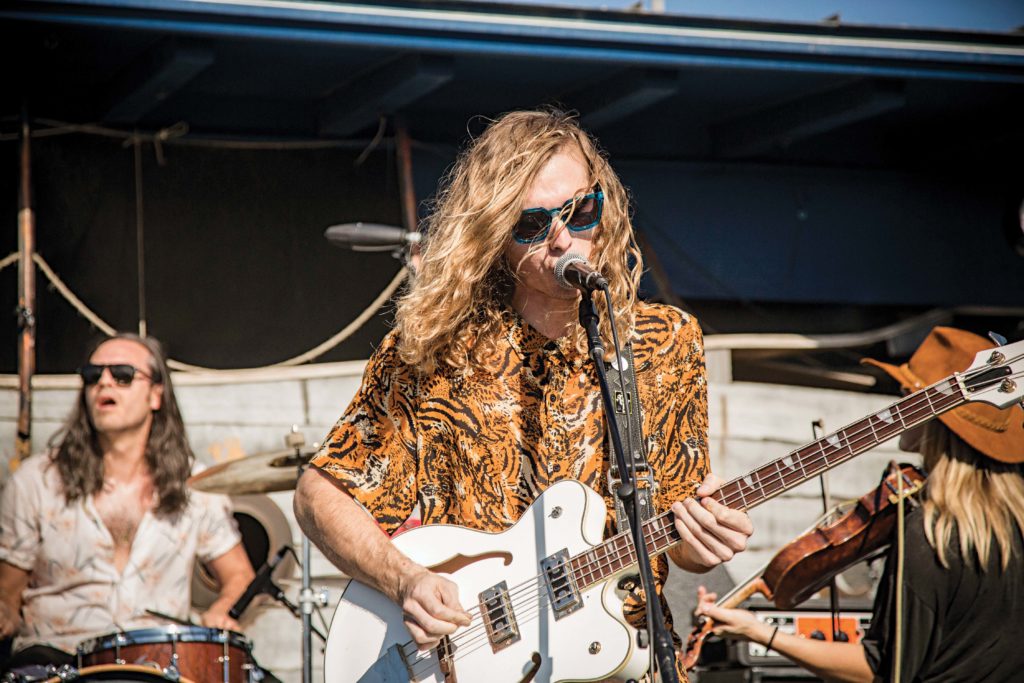
What goes into the process of picking the bands?
Music is tough. What’s going on in the vicinity? What’s available? We really try to pick a genre. This year it was white boy reggae. But Fishbone obviously is a classic ska band that I’ve followed since I was a kid. Yeah, having Fishbone, Long Beach Dub Allstars, Law, Wargirl, Spirit Mother and the Bent Duo all served as the backbeat to the event. Great bands. Great music.
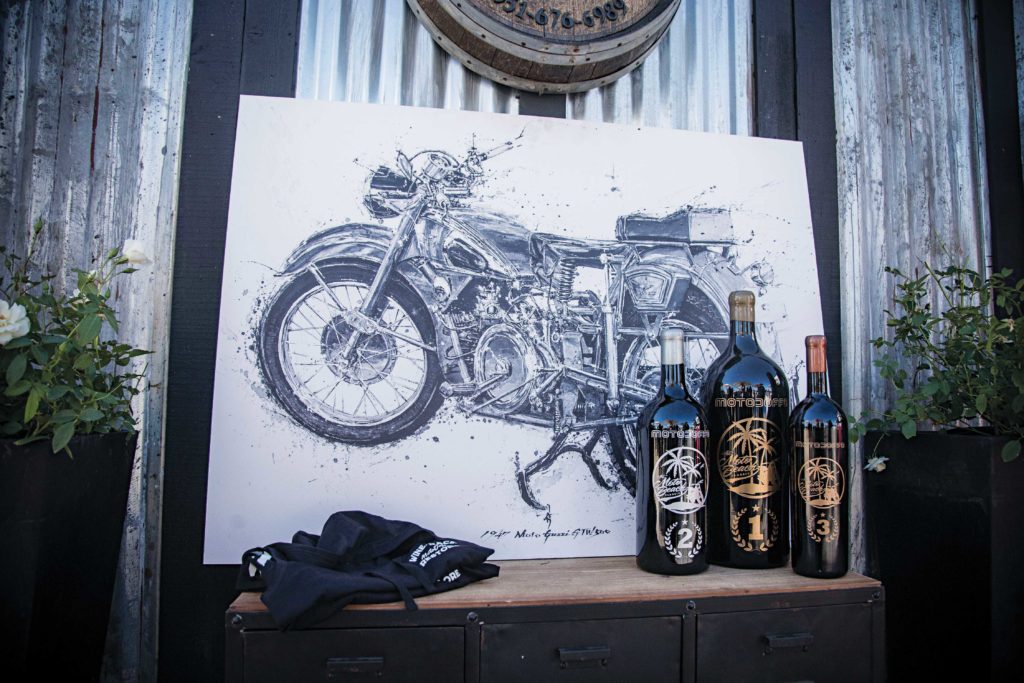
When it comes to vending and sponsor space, how does that happen? How do you bring it all together?
It’s lifelong relationships. When you’re able to pick up the phone and say, ‘hey we’re doing something cool,’ and people trust that you’re not just throwing something together to make dough and turn around and walk away. We put our effort into these events big-time, and people trust that we’re going to do that.
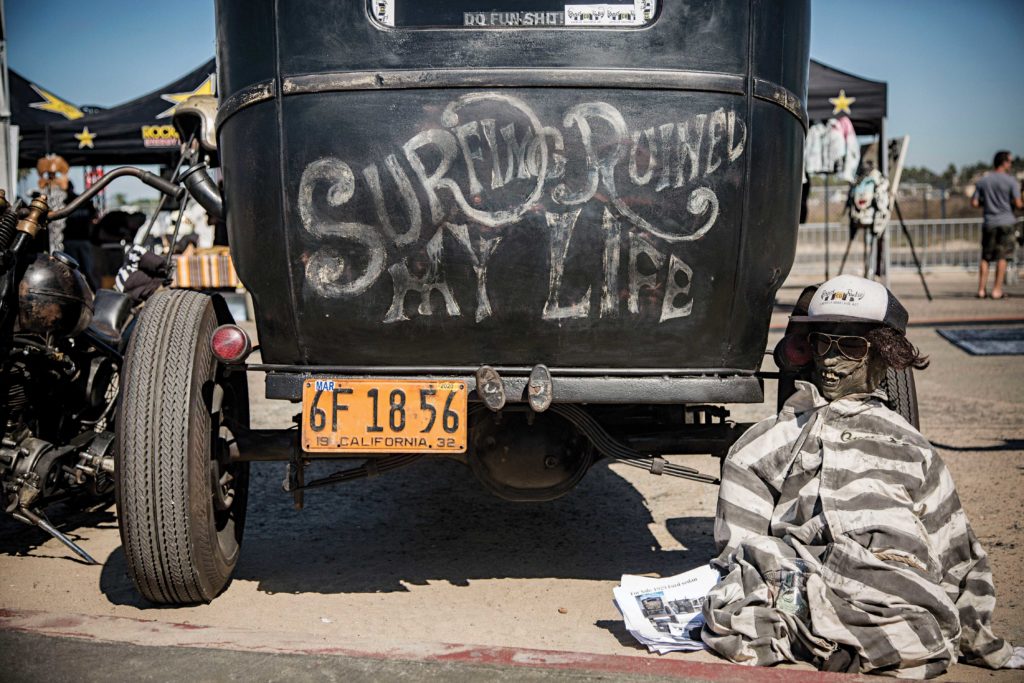
Why do events? They seem like a lot of work.
Events are difficult. Anyone who tells you any different is lying. You can crush at one and then get crushed the next year. You really have to do it for the love of connecting with the people you bring to the event. It’s gotta be worth it, worth it to you for the people. If you do it just for the money you’re going to get smoked. I always like bringing new things to the table for people. What are they paying for? Not the same thing they saw before. They want to see something brand new. We always try and bring that to the table and give people new experiences. Do it for the families and the kids. Give people the ability to come out and see things with their entire crew.
This interview has been edited for length and clarity.
